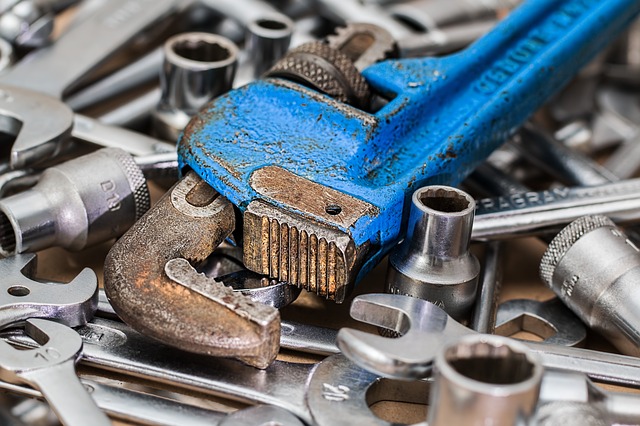By Kelvin Dodd
Jag XJ-S Axle ID
I am working on the rear brakes of a Jaguar XJ-S. How do I determine if it has a Dana rear end?
—Cliff Singer
Take a look at the side of the rearend assembly where the stub axles come out of the differential case. The flange that holds the stub axles in place has 3 bolt holes on the Hotchkiss-style Dana unit; the Salisbury-style axle has 5 bolt holes. In addition, the bottom of the Dana unit is flat with no drain plug; the Salisbury unit has a hump and an oil drain plug.
Knowing which diff the cars has is critical for ordering replacement rear brake rotors: Rotors for the Dana axle has access holes at 120 degrees, and the Salisbury axle has them at 72 degrees.
Brake Line Sealing Tricks
I installed new brake lines and some of the joints are leaking. Is it okay to use plumbers’ Teflon tape to seal the joints? Will the tape be attacked by brake fluid? I’ve tightened the connections as much as I dare without damaging the nuts.
—Steve Reeves
Never, ever use Teflon tape as a sealing medium for anything other than pipe-thread applications. Pipe threads jam as you thread the pipes together, and the only seal is offered by the jammed threads. Teflon tape and other pipe dopes are designed specifically for lubricating and sealing this type of connection in applications such as domestic gas lines, some oil-pressure fittings, etc.
In almost all instances, brake systems seal on the pipe seat, not on the threads. (One exception is some brake pressure switches, which employ pipe thread.) Using Teflon tape to seal non-pipe-thread fittings is asking for trouble—the primary seating surface is designed to handle the sealing pressures. If these seats are not secure, Teflon tape on the threads may mask the problem at low pressure and fail without warning under high-pressure or emergency use.
Teflon tape or liquid pipe dope can be a useful thread lubricant in some situations when connection threads are damaged or corroded to prevent the threads from galling further. An example of this would be oil cooler lines, which do have problems with corrosion between the alloy cooler fitting and steel line fitting. In this case, the Teflon lubricates and protects the threads from external moisture.
If you’ve replaced the brake lines, break the leaking ones and check to make sure that the seating surfaces are in good condition with no cracks or scarring. Use a pipe-fitting (“line”) wrench (these grab all of the nuts’ shoulders and are available from Sears and many auto-parts stores) and retighten the fittings. Hopefully with the correct tool you will have less of a worry of damaging the nuts.
Coil Quandry
I purchased a new coil, and when I went to install it, the markings were different from my original coil: The original terminals say CB and SW, and the new coil has + and -. The car was originally positive ground, but I think it has been changed to negative ground.
—Mike Selner
Your original coil is lettered for installation in a positive-ground vehicle. CB refers to the contact-breaker connection from the distributor, and SW refers to the ignition switch connection or power into the coil.
In the positive-ground vehicle, the ignition switch is connected to the “hot” side of the battery, which would be the
negative terminal, and the points in the distributor complete the circuit to ground, or positive terminal of the battery.
To hook up a coil correctly, you first need to know if the car is currently negative or positive ground. Check the battery and see which terminal is grounded to the chassis. In a positive-ground car, the white w/black wire connects between the CB terminal and the distributor points. The white wire from the ignition switch connects to the SW terminal.

Check which battery cable is grounded to the chassis to determine the car’s polarity before swapping the coil.
If the car has been converted to negative ground, the coil should be reversed, so that the ignition switch (white wire) connects to the CB terminal of the coil and the white w/black wire from the distributor connects to the SW terminal. If you install a newer coil with (+) and (-) terminals, rather than CB and SW, remember that how the car is grounded determines how the coil is installed and wired. Negative-ground cars have the (-) terminal connected to the points; positive-ground cars have the (+) terminal connected to the points. Hence: Positive-ground cars’ white w/black wire connects to the (+) terminal; negative-ground cars’ white w/black connects to the (-) coil terminal.









'Tech Q&A: Winter 2005' has no comments
Be the first to comment this post!